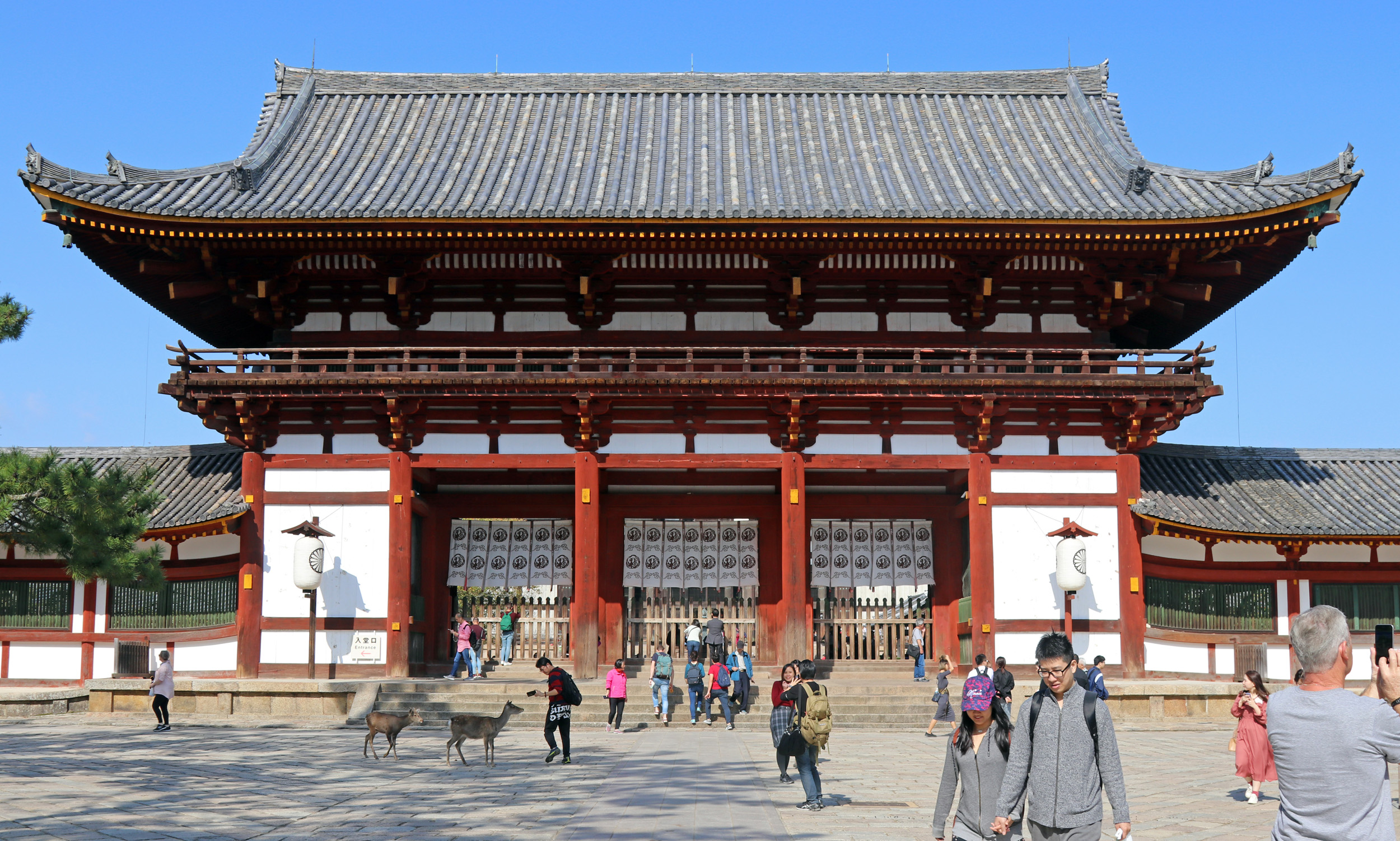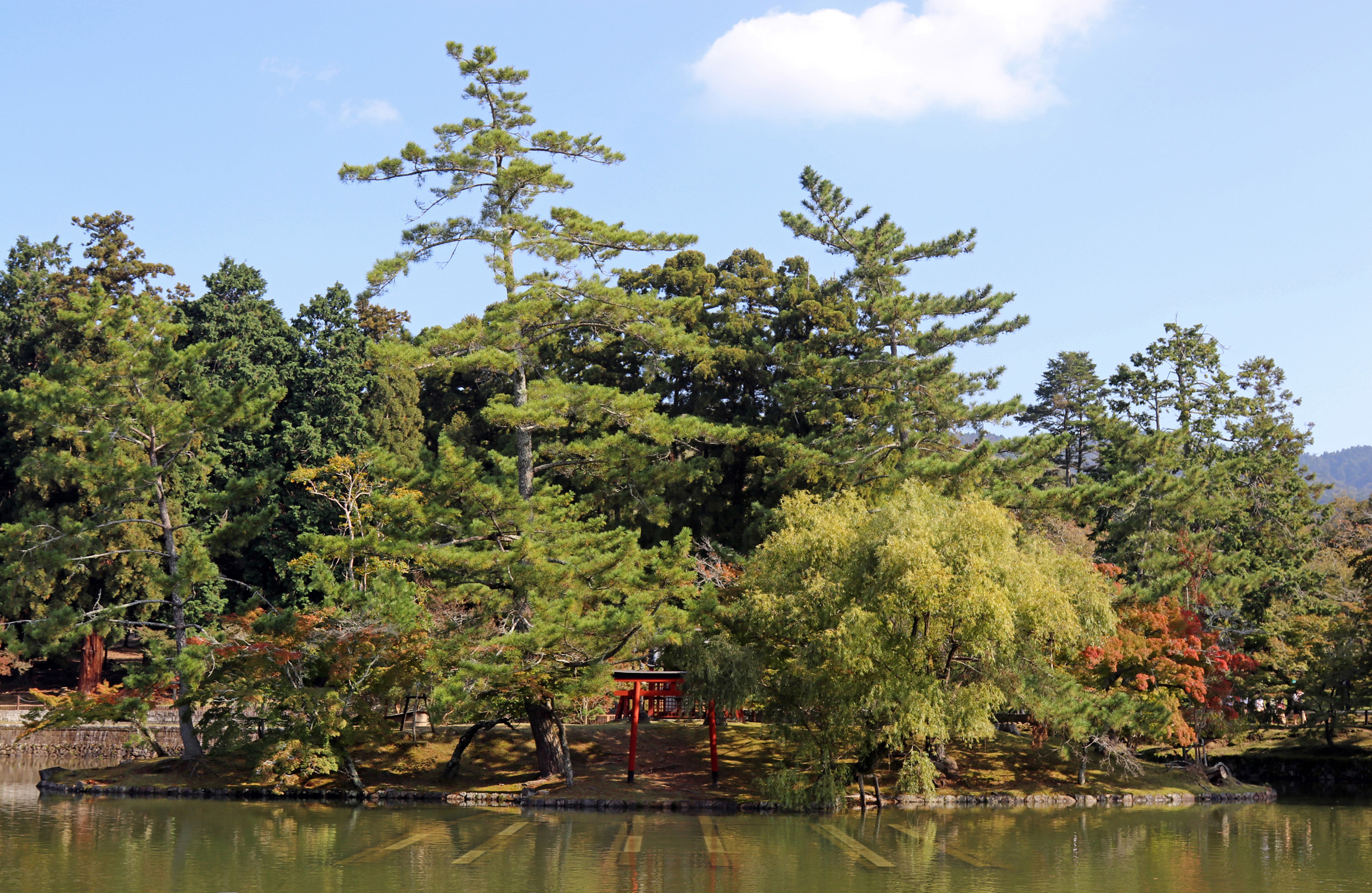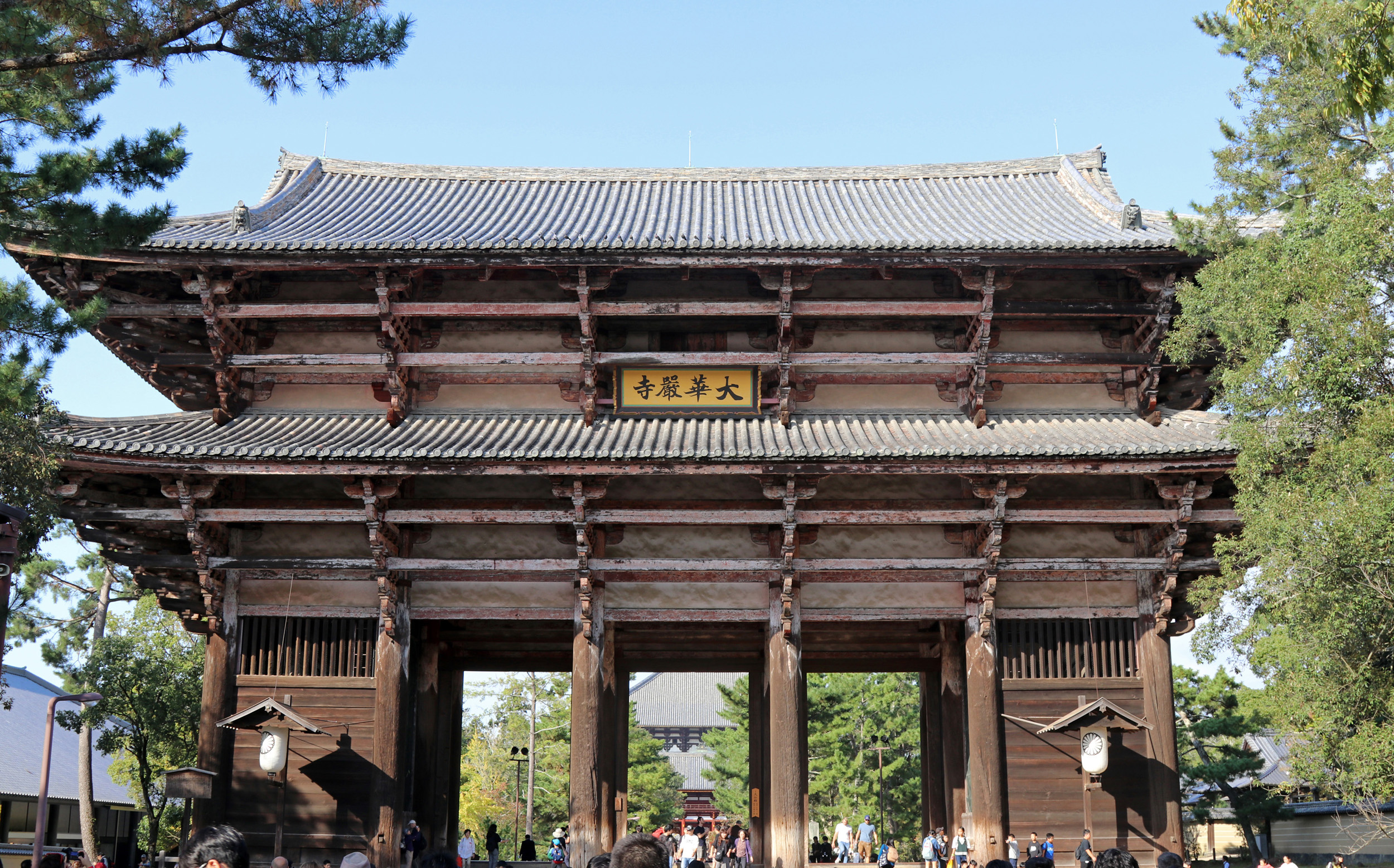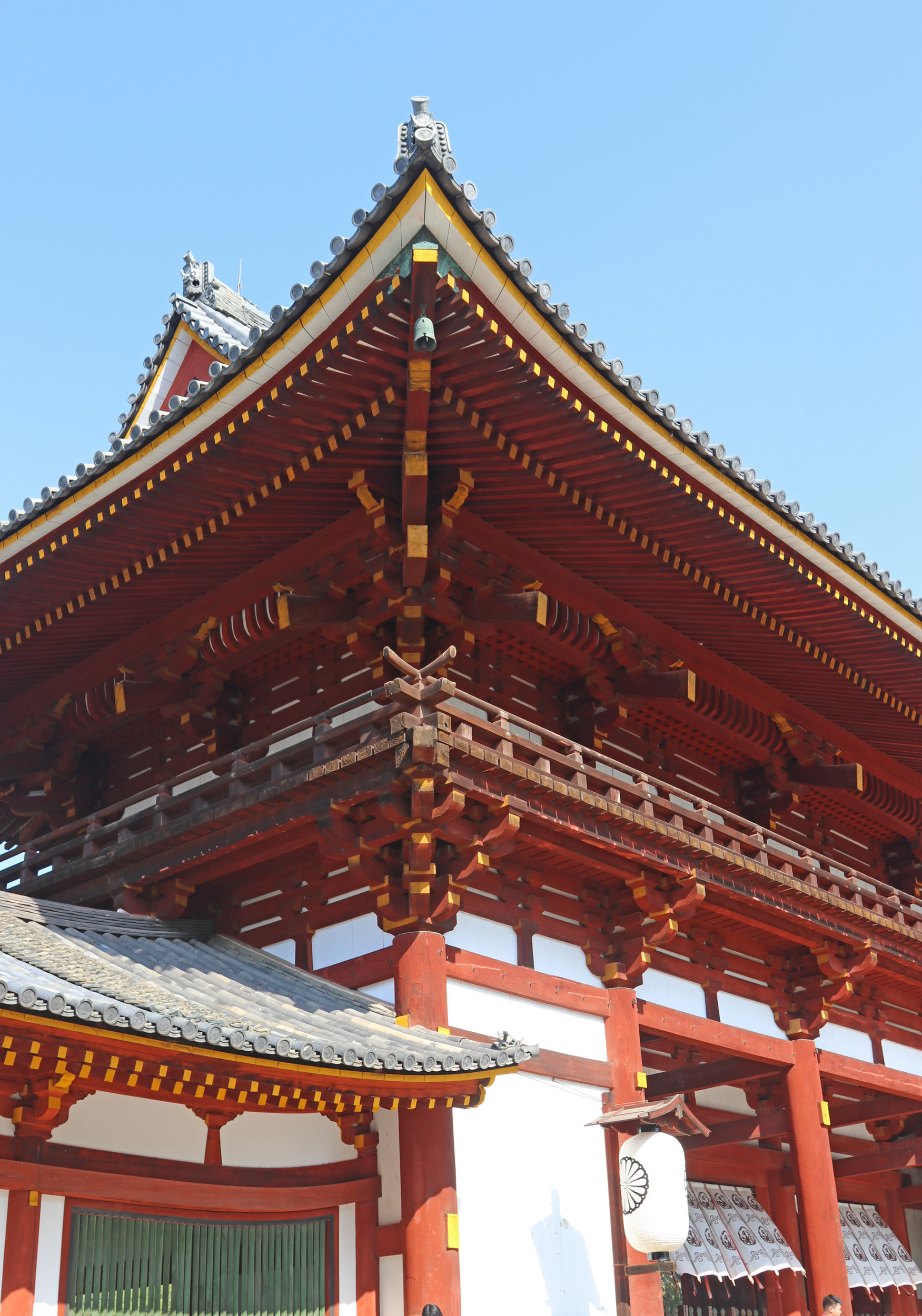Todai-ji Temple
From Kasuga
Taisha we then ventured back down to the bottom of Nara park and walked along
to our next stop, the Todai-ji Temple, taking about 25 minutes in total. Alternatively,
Todai-ji Temple can also be reached by bus from either Nara Station or Kintetsu
Nara Station.

Todaiji or “Great Eastern Temple” is a landmark of Nara, and one of Japan’s most historically significant and famous temples. The temple complex was built by the order of Emperor Shomu over the Nara period of 710 to 784, with the complex being finally completed in 798, after the capital had been moved from Nara. Most historians agree that the temple was built to consolidate the country and serve as its spiritual focus. It is said, legend has it that over 2 million labourers worked on the temple, but this is though to be most likely mythical. That is said to be certainly is the construction brought the country to the brink of bankruptcy! Todaiji served as the head temple of all regional Buddhist temples of Japan, and grew so powerful that the capital was moved, as to lower the temples influence on government affairs.

The garden
is a combination of two strolling garden’s designed in two different periods,
the Edo Period and the Meiji Period. The front part of the garden has the
longest history and dates back to the mid-17th century, whereas the
rear part of the garden is more recent and was built in 1899 by a wealthy
merchant. The garden was designated a “scenic site” by the government in 1975.

Please find our other Nara articles in the 'Nara' section of the website.

Todai-ji Temple is situated at the end of a long wide path, but about 200 metres before the entrance to the temple, we first walked through the magnificence large wooden Nandaimon Gate or The Great South Gate. Once through the gate, Todai-ji Temple and its buildings are stunning, being very striking and imposing! Certainly, hard to miss!

Todaiji’s main hall, is among the world’s largest oldest wooden buildings and until recently held the world record, even though the present reconstruction of 1692 is only two thirds of the original temple’s halls size. This massive and impressive building houses one of Japan’s largest bronze statues of Buddha or Daibutsu (Great Buddha), of which it is 15 meters tall and one of the world’s largest bronze Buddha’s. The original Daibutsu was cast in bronze in eight castings over the period of 3 years, with certain parts being recast several times over the centuries. The original was even covered in gold leaf which would have been an amazing site for visitors to the temple in the eight century AD.
The temples grounds are spacious and cover most of the northern part of Nara Park, including a number of smaller temple halls and sites. To enter the temples hall and grounds there is an admission fee of 600 yen (£4.10), but the temple can also be easily viewed from the entrance gate. Due to the fading light and our one-day time schedule running out! We unfortunately didn’t have time to enter and visit the temples main hall, but we will certainly be returning to Nara again and make it our main stop!
